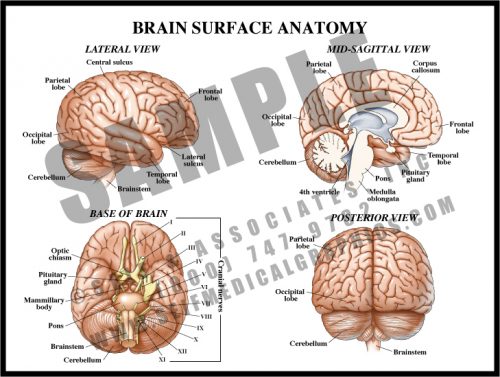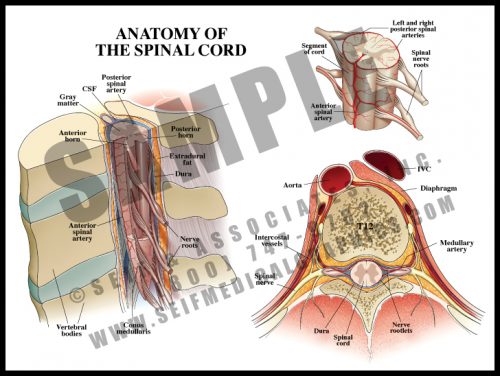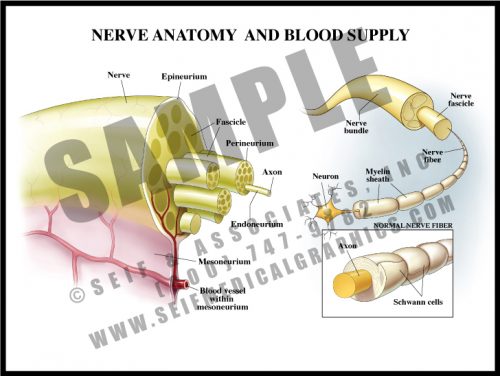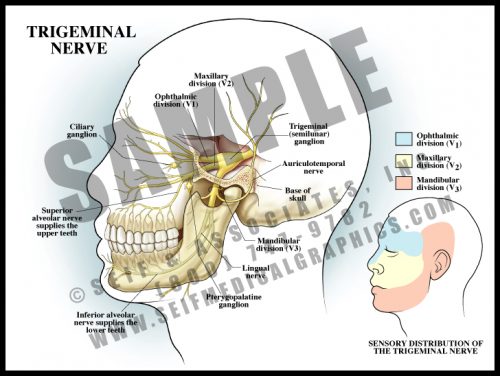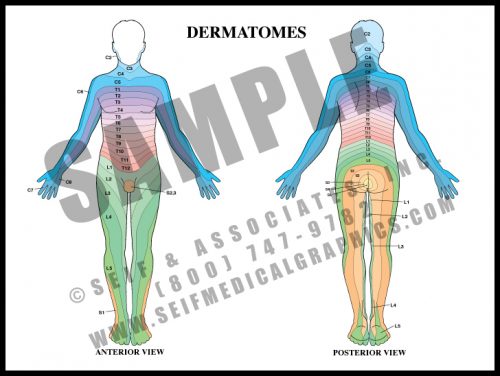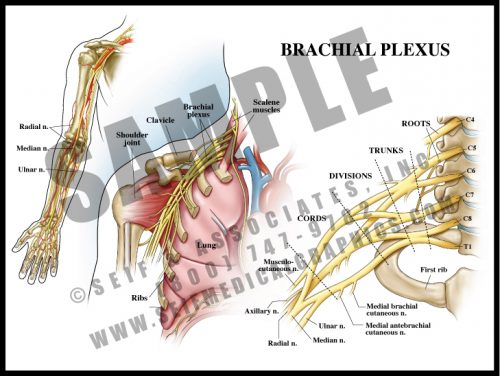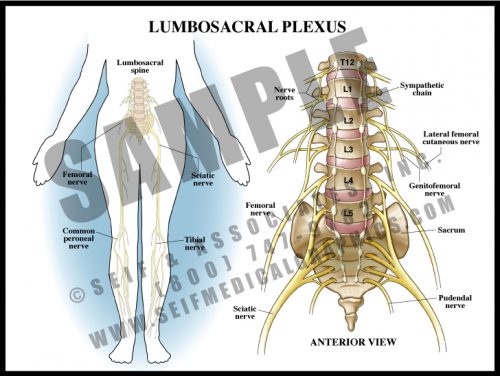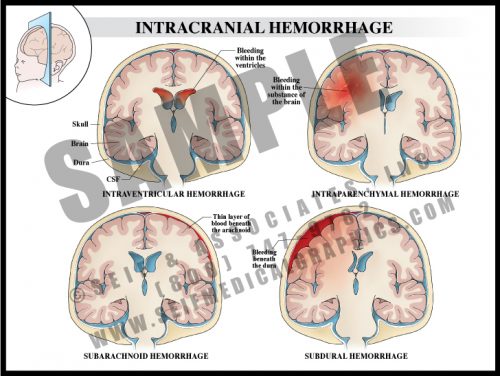- The surface of the brain has multiple folds, or gyri, separated by sulci. While many of these are specific to a particular individual, some are constant and serve as landmarks for functional control.
- The cerebrum is the large, rounded portion of the brain and is the site of higher functions. The cerebellum and brainstem control more basic functions like heart rate, balance, and respiration.
- The cranial nerves mostly originate in the brainstem and exit the skull via foramina in the base of the skull (see M1). The optic nerves originate in the occipital lobes, travel along pathways inside the brain matter, and exit anteriorly.
- The corpus callosum is a group of myelin-covered neuronal fibers (white matter) which connect the right side of the brain with the left.
-
-
- The spinal cord lies within the spinal canal, formed by the vertebral bodies and the bony arch formed by the pedicles and laminae (see M6).
- The cord and its terminal nerves, the cauda equina, lie within the dural sac, a tough membranous structure filled with cerebrospinal fluid bathing and protecting the cord.
- The spinal cord itself ends at the level of the first lumbar vertebra, but nerve roots travel inside the dural sac to exit at lower levels; these roots form the cauda equina (”horse’s tail”).
- Blood supply comes from the segmental branches of the aorta, traveling along the nerve root to emerge as the anterior spinal artery running in the front midline of the cord; there are two parallel vessels along the back surface of the cord. There is also a generous venous plexus within the canal.
-
- Nerves are composed of multiple fibers which in turn are composed of many, many axons. Each successive grouping of fibers is surrounded by connective tissue.
- Axons are the long branches of nerves cells which transmit electrochemical impulses from one nerve to another or to and from target organs.
- The axons are surrounded by myelin, a kind of insulating material formed by oligodendrocytes. In diseases in which myelin is destroyed, electrochemical conduction is impossible, and even if the nerve fibers do not die, they are ineffective.
- Blood vessels travel through the mesoneurium and then divide into capillaries within the nerve to deliver oxygen and nutrients.
- Nerves are vulnerable to trauma, reduced oxygen levels, and diabetes.
-
- The semilunar ganglion of the trigeminal nerve lies deep within the skull. The three branches of the nerve leave through large separate openings in the base of the skull.
- The trigeminal nerve is the 5th cranial nerve. Its three portions are the ophthalmic nerve controlling sensation to the upper face, the maxillary nerve controlling sensation to the mid-face, and the mandibular nerve supplying sensation to the lower face and the skin around and above the ear. Each of the branches supplies both soft tissue and bone.
- All large ganglia in the body can harbor certain viruses. Oral herpes infections “hibernate” within the semilunar ganglion, traveling down the nerve roots to the mouth when the virus is activated by stress.
-
- Dermatomes are strips of skin which are supplied by the nerve roots. If there is numbness or pain along a dermatome, it is a sign of damage or irritation of a specific nerve root, where the root exits the spinal cord and vertebral column. This is known as radiculopathy.
- Soon after the cervical and lumbosacral nerves leave the cord, they join and separate several times (plexi) before reaching their target organs. Nerve fibers to a given muscle may come from several different nerve roots. The skin sensory supply, however, remains directly associated with the root alone.
- Radicular pain usually occurs with compression of the nerve in the foramen, the hole by which the nerve exits the spinal canal.
-
- The nerve roots of the lower cervical spinal cord split and merge several times before supplying the arm and hand.
- The brachial plexus lies over the first rib and behind the clavicle. It is intimately related to the subclavian/brachial artery and passes between the scalene muscles of the neck.
- The plexus is divided into roots, trunks, divisions, cords and terminal branches. By looking at the anatomical distribution of pain or dysfunction, it is possible to determine the location of a brachial plexus lesion.
- Brachial plexopathy can occur during delivery with or without shoulder dystocia, and from thoracic outlet syndrome.
-
- Analogous to the brachial plexus, the lumbosacral plexus is a series of nerve convergences and separations which ultimately combine into several large terminal nerves.
- Plexi form a protective mechanism in that if one nerve root is damaged, a particular muscle might be weakened, but function would not be completely lost.
- The terminal nerves in the legs generally follow the course of the deep vasculature.
- Terminal sensory nerves to the feet are particularly vulnerable to diabetes, resulting in peripheral diabetic neuropathy. This frequently contributes to foot infections and the need for amputation.
-
- Intraventricular hemorrhage is bleeding within the cavities of the brain that normally hold clear cerebrospinal fluid (CSF). Such bleeding is frequently associated with pre-term delivery and can result in hydrocephalus and loss of brain tissue.
- Intraparenchymal bleeding is within the brain tissue itself and usually results from ruptured arteriovenous malformation (AVM), hemorrhage following ischemic infarction or hypertension.
- Subarachnoid hemorrhage usually results from a ruptured surface AVM or cerebral artery aneurysm.
- Subdural hemorrhage is the result of trauma leading to disruption of bridging veins between the dura and the brain.
